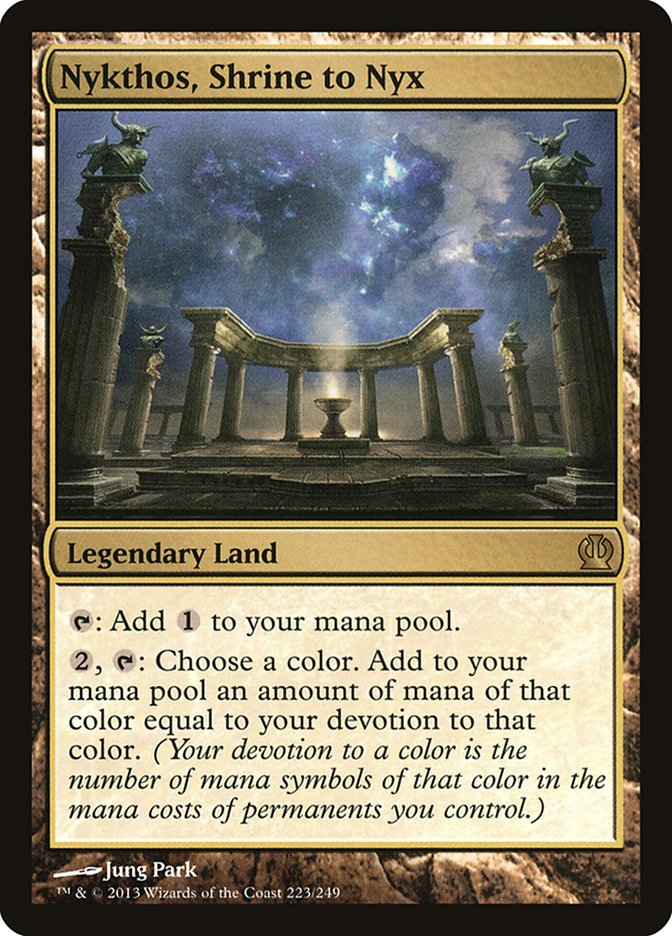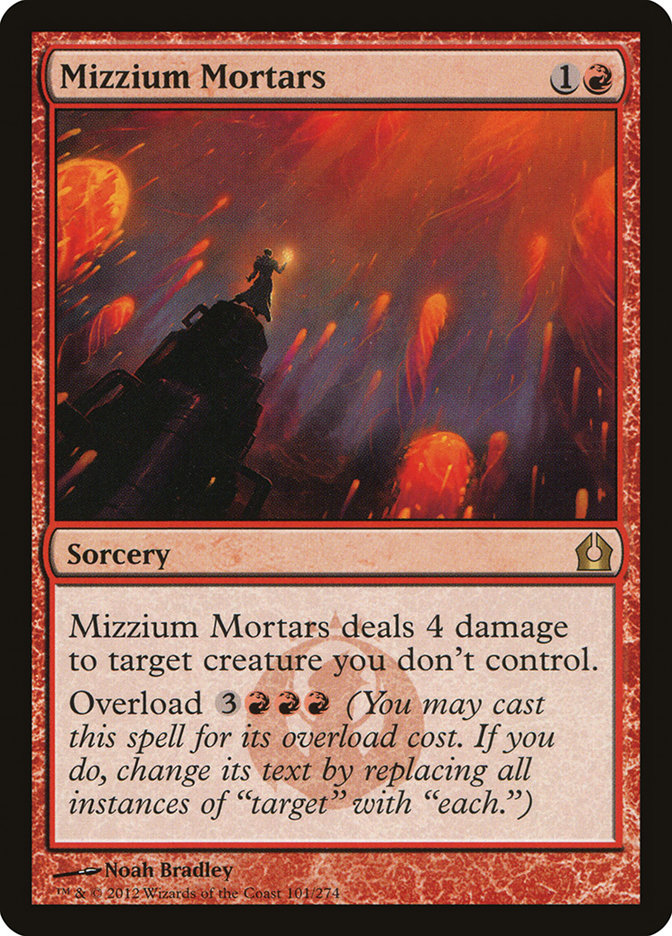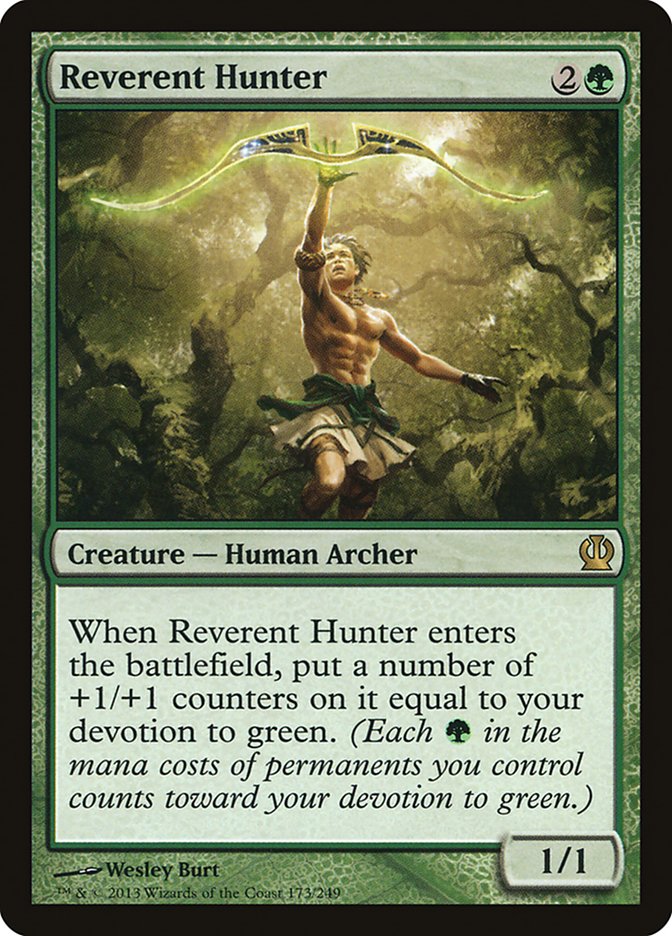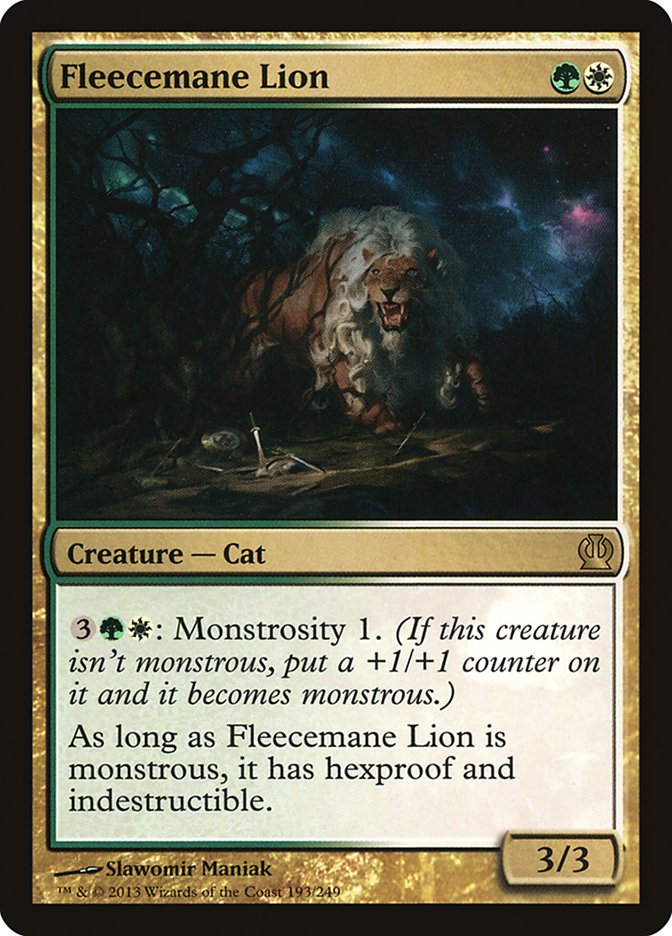You can feel it in the air. A humming of . . . happiness. The crackling of foil as it gets ripped off of new booster packs. The smell of freshly opened cards as you sift through looking to strike gold. The atmosphere is almost tangible.
The new set. The new Standard.
And with every new set comes a Pro Tour. Set in Dublin, Ireland, this weekend is sure to bring some sick brews, awesome Limited action, and the best names in the game showing off their skills. I, for one, can’t wait.
Leading up to the Pro Tour, there is usually a dearth of content about the respective format since so many pros are keeping their information secret. It is bad for business when you let something slip because then everyone at the tournament will want to play what you’re playing (assuming it is good). Luckily for you guys, I’m not going to the Pro Tour, and I have a wealth of information for you today.
Let’s start with one of the coolest cards in the new set.
It has been quite some time since we’ve had access to a land that can generate more than one mana. Cabal Coffers comes to mind, but its inability to tap for a colorless mana on its own made it a little less appetizing, though it still saw a ton of Standard (and Block) play. Cabal Coffers allowed you to go crazy casting multiple backbreaking spells in a single turn or gave you enough mana to kill your opponent with cards like Nantuko Shade. Suffice it to say, we can usually find multiple ways to abuse having so much mana, and the current Standard format is no different.
While Nykthos isn’t quite the same as Cabal Coffers, as you need to be playing actual factual permanents to start generating a ton of mana, the concept is similar. Do whatever it takes to generate a billion mana and then use a lethal combination of spells to kill your opponent by overpowering them. In the current Standard, this can be done a few different ways, though I’m still uncertain which one is "the best."
First up, we have the brew that started it all (for me) by GerryT. Here’s my list, which is a bit updated from the original:
Creatures (13)
Planeswalkers (2)
Lands (21)
Spells (24)
- 4 Plains
- 3 Mountain
- 3 Mizzium Mortars
- 4 Detention Sphere
- 3 Sphinx's Revelation
- 2 Blind Obedience
- 3 Chained to the Rocks
- 2 Spear of Heliod
Sideboard

If you read Gerry’s article last week, you’ve seen this particular archetype already. While it is a bit clunky at times due to the four copies of the legendary Nykthos, the upside is getting to do absolutely busted things. Your deck has quite a few ways to take advantage of the mana boost, as well as a reasonable amount of permanents to fuel Nykthos that aren’t creatures. Since creatures tend to die, we can’t always rely on them to "turn on" our Nykthos, so having access to cards like Chained to the Rocks, Detention Sphere, and even Blind Obedience will help you generate the extra mana you need when your opponent draws an answer to Boros Reckoner.
The aspect I like most about this deck is that it feels absurdly powerful against any strategy that doesn’t aggressively attack your creatures. That means that decks like G/W Aggro (that won the StarCityGames.com Standard Open in Cleveland) are going to have a tough time, especially when you start dropping Angel of Serenity on top of their head. The fact that you’re probably favored against this particular archetype is already a good reason to consider it for this weekend.
Chained to the Rocks is a bit weaker in this particular shell than I want it to be since you only have eleven Mountains, but it is a cheap removal spell that can help power up your Nykthos, so I don’t think you can rightly leave it on the sideline. The card handles so many threats that are tough to deal with and exiles them to boot. With Chained to the Rocks, Chandra’s Phoenix doesn’t stand a chance! There are only a few creatures in the format that it doesn’t kill, but we have other ways of putting them in their place.
Mizzium Mortars is one of the few ways for this particular color combination to deal with Blood Baron of Vizkopa and Stormbreath Dragon. While neither card has made too many waves on the Open Series just yet, I’ve played with and against both of them, and they are not to be taken lightly. You need some number of answers to them or they’re just going to kill you. If you don’t kill either of these creatures, your opponent doesn’t actually have to cast another spell to kill you. Racing either is incredibly difficult. Playing without Mortars in this build would be suicide.
One hilarious aspect of this deck is that Nykthos can actually help you overload Mizzium Mortars if you have a Boros Reckoner in play. Nykthos does it all!
The mana base can be shaky at times, but I think that’s just a factor of the current format. If you want to play three colors, you’re going to have to play a lot of lands that deal you damage and come into play tapped. Nykthos definitely doesn’t help in a lot of those situations, especially when drawn in multiples. For initial testing, I wanted to try four to see how detrimental its legendary status is. At times, it was horrendous, which probably means that three (or possibly two) is the correct number.
Many of the cards in the maindeck and sideboard are experimental (for me at least) so nothing is really set in stone. Angel of Serenity shines against most aggro decks when you can ramp into it but is clunky and is weak against control. If we had more creatures, it might be better, but I might end up wanting one in the maindeck and one in the sideboard.
As for the rest of the sideboard, Ratchet Bomb has been absurd. We don’t really want Supreme Verdict in this shell because we want all of our creatures to stay in play to fuel Nykthos. But we still need cards to beat Advent of the Wurm, and we still want a sweeper for swarm-style aggressive strategies. Ratchet Bomb handles both pretty easily, so we might end up wanting four copies total and perhaps some in the maindeck.
I’ve seen quite a few different versions of Nykthos decks, and one in particular caught my eye as I watched a Daily Event on Magic Online a few days ago. I didn’t get the entire list, so I tried to rebuild it from what I saw:
Creatures (35)
- 4 Burning-Tree Emissary
- 4 Experiment One
- 4 Gyre Sage
- 4 Elvish Mystic
- 4 Kalonian Tusker
- 3 Kalonian Hydra
- 2 Polukranos, World Eater
- 4 Reverent Hunter
- 3 Nylea, God of the Hunt
- 3 Boon Satyr
Planeswalkers (2)
Lands (3)
Spells (20)
- 20 Forest

The deck is explosive to say the least. With so many creatures with GG in the casting cost, Reverent Hunter is bonkers against any deck without Supreme Verdict, often jumping up to a 6/6 or larger on turn 3. Without Burning-Tree Emissary, it is much less explosive, but that’s how it goes with most decks featuring BTE. The odd thing about this deck is that it usually doesn’t want to cast BTE until turn 3!
Like most mono-green decks, this one is full of creatures that are pretty weak to Supreme Verdict, but there isn’t really a ton you can do about it. Other than landing an early Garruk, Caller of Beasts, you’re going to fold to Verdict more often than not. But if the current trend stays true and blue decks aren’t prominent, then this deck can easily go over the top of midrange and aggressive decks.
Kalonian Hydra and Nylea, God of the Hunt both give you gigantic monsters that bust through stale boards. This might be the only time I ever say this, but . . . I actually miss Craterhoof Behemoth. It is a shame that Craterhoof Behemoth rotated out with such a strong land to abuse it becoming available, but you can’t always have everything you want.
The good news is that you don’t need to play too many creatures in order to force a Supreme Verdict. Kalonian Tusker into Reverent Hunter is seven power by itself, giving them good enough reason to send them packing so you can play out the rest of your hand. I’ve considered Mending Touch as a potential sideboard option to save one creature, granting you some staying power if you decide to move all in on Hydra or Reverent Hunter, but I’m not sure how powerful that kind of effect is when your opponent can also just play Azorius Charm. Ranger’s Guile might also be a good option.
The maindeck can put some pressure on the opponent in a hurry, and having access to Garruk keeps the fire burning. Nylea, God of the Hunt, as well as Experiment One, can also give you some staying power against Supreme Verdict, but Nylea still suffers from the same problem as every other God—Supreme Verdict generally turns off their devotion for multiple turns.
I’ve considered shifting this deck to a G/W version featuring Voice of Resurgence and the potential of Ready // Willing and Rootborn Defenses out of the sideboard, but it makes many of your cards significantly weaker. In the end, I’ll probably stick to mono-green and just play the deck when I think I won’t face U/W Control too often.
A different green deck that most of you have probably seen by now is G/W Aggro, which was ported over from Craig Wescoe Pro Tour Dragon’s Maze-winning decklist. Since it was Block Constructed, we only gained new tools as opposed to anything rotating. Here is my updated version, a list that is similar to the one Eric Finnegan used to win the StarCityGames.com Standard Open in Cleveland.
Creatures (22)
Lands (6)
Spells (32)

I haven’t tested too many different versions of the deck, as this one has been doing pretty well for me, but that doesn’t mean it can’t be improved. Elvish Mystic is likely better than Dryad Militant in a majority of your matchups but is pretty weak against Supreme Verdict decks. Against them Dryad Militant shines because it can apply a lot of pressure for a small investment. Regarding the argument between Dryad Militant and Soldier of the Pantheon, the answer is simple. Dryad Militant can be cast much more easily and therefore gets the nod. You don’t have access to a lot of good mana fixing, so having cheap cards that are flexible is more important than versatility.
One of the most surprising points of the deck is that Loxodon Smiter is actually just flat-out worse than Boon Satyr—and it isn’t close. I can see why Eric chose to play zero copies of Smiter in his deck and four Boon Satyrs, but I don’t think this is the time to be maindecking Unflinching Courage. There are far too many removal spells running around to punish you, and I would much rather just have Courage in the board for the Mono-Red Aggro matchup.
Hilariously enough, I also found Fleecemane Lion to be worse than Call of the Conclave a majority of the time. The baseline here is that both are just 3/3s for two mana about 80% of the time—most of the time they are effectively the same card, giving you a decent body for a small amount of mana. They both pump Experiment One and attack for three. The tricky part is figuring out when they’re different and which one is better in varying situations.
The fact of the matter is that Rootborn Defenses is quite the card and you want to maximize its effect when you can. Against Supreme Verdict, it is one of the best tools at your disposal, so Call of the Conclave gets the nod here. While Fleecemane Lion can also dodge Supreme Verdict on its own, it costs a significant amount of mana, and you don’t always have the time or resources to dedicate to making it monstrous.
After sideboard, you gain access to more cards that can populate, which eventually gives Call of the Conclave the edge in the debate. It is so much better to Fog and create a 3/3 in a racing situation with Druid’s Deliverance than it is to just Fog. The same goes for Trostani, Selesnya’s Voice in any sort of matchup where it is important to generate threats as well as gain life.
The downside to Call of the Conclave is Ratchet Bomb. You’re already pretty vulnerable to it thanks to Voice of Resurgence, Selesnya Charm, Advent of the Wurm, and a few one-drops. Call of the Conclave is a lot worse in this scenario than Fleecemane Lion. However, I still think that Call is better given access to Rootborn Defenses, but that is the biggest reason for the 4-3 split.
You can argue cutting down to two Smiters in favor of the fourth Fleecemane, and I wouldn’t blame you. I think having a few more gigantic guys is better in the long run, but this is not a deck that wants to miss a drop on curve. If you find yourself flooding with expensive cards, you might want to make the swap. Loxodon Smiter is one of the worst cards in the deck since we aren’t playing Elvish Mystic.
Speaking of Elvish Mystic, I’m going to be trying it out a little bit over Dryad Militant in the next few days to see which one I like better. Like most people, I know that for me the old idiom holds true: "If it ain’t broke, don’t fix it." With the deck performing on the level that it is now, that argument is pretty strong, but I’m an advocate of experimentation. I mean, I don’t think anyone besides Eric Finnegan thought about cutting Loxodon Smiters from a G/W Aggro deck, and look how that turned out for him!
If you take anything away from my articles, it should be that experimentation and evolution of established archetypes is the lifeblood of Magic. Metagames change, and you need to find new ways to attack established archetypes or potentially brew something spectacular that just so happens to hit the format right in its soft spot. With the Pro Tour on the horizon, we’re going to get a little help in the brewing department, but that doesn’t mean you have to wait until then! Theros is now available on Magic Online, so get out there and try whatever you want. There is so much so explore in Theros and so many cards that are completely off of people’s radar. I, for one, didn’t even see Nykthos coming, and now I’m almost certain it’s going to make its big debut at the Pro Tour.
Todd Anderson
strong sad on Magic Online
@strong_sad on Twitter





